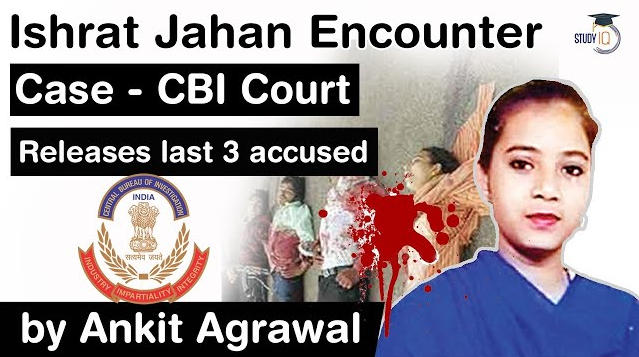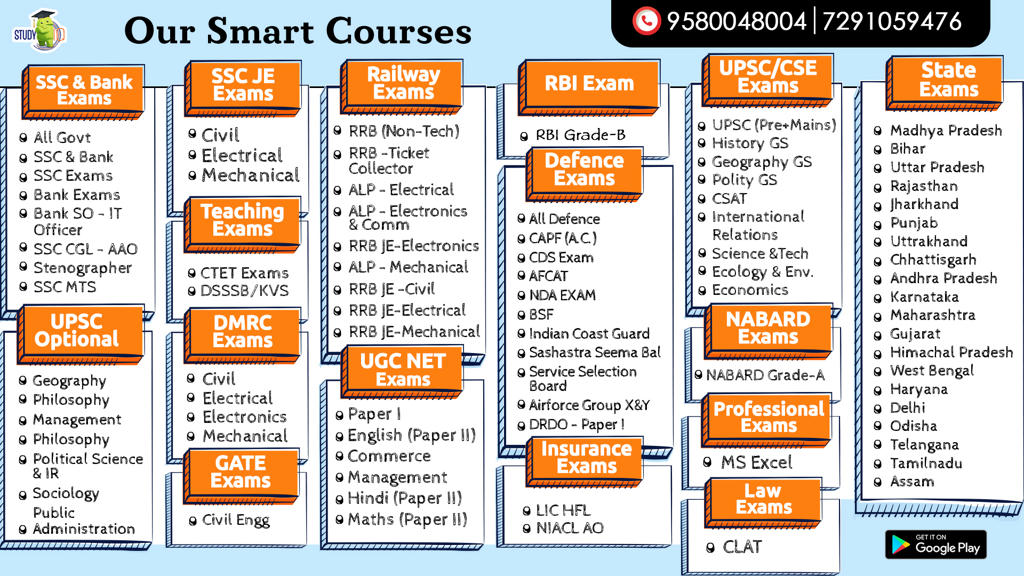Table of Contents
What has happened?
- On Wednesday, a Special CBI court discharged GL Singhal, Tarun Barot and ASI Anaju Chaudhary,
- The last of the three policemen facing charges in the encounter case of Ishrat Jahan and three others.
What is the Ishrat Jahan encounter case?
- On June 15, 2004, Detection of Crime Branch, Ahmedabad, led by its then Deputy Commissioner of Police DG Vanzara, Gunned down Ishrat Jahan Raza, Javed Sheikh alias Pranesh Pillai and two alleged Pakistanis Zeeshan Johar and Amjad Ali Rana,
- In an alleged encounter near Kotarpur Waterworks on outskirts of Ahmedabad.
- Gujarat Police claimed to have acted on an intelligence input that Javed was coming with two fidayeens in a blue Indica, MH02 J A 4786, to kill Chief Minister Narendra Modi.
- As per the FIR of the Ahmedabad City Crime Branch, filed that day by then ACP of crime branch Singhal, based on a complaint filed by then crime branch police inspector JG Parmar,
- The intelligence was received by Ahmedabad Police Commissioner K R Kaushik around end of May-beginning of June in 2004.
- It also said Joint Commissioner of Police P P Pandey had received specific information “through his personal source”
- That a blue Indica had left Mumbai for Ahmedabad with Javed and the “two Pakistani fidayeens”.
- The FIR described the operation, and described Ishrat as “one woman terrorist seated on the seat adjacent to the driver’s seat”.

- The bodies of Ishrat, a 19-year old Khalsa College student from Mumbra, was claimed by her mother Shamima Kauser, and that of Javed Sheikh was claimed by his wife Sajeda, who lived in Pune.
- The bodies of the two ‘Pakistanis’ were buried in a kabristan in Ahmedabad as nobody came to claim them.
Case in Gujarat HC
- In 2006, the Gujarat High Court admitted Ishrat’s mother Shamima Kauser’s 2004 Special Criminal Application seeking a CBI investigation into the alleged fake encounter.
- A year later, IPS officers D G Vanzara, Rajkumar Pandian and Dinesh MN were arrested in the Sohrabuddin Sheikh fake encounter case,
- Following a Supreme Court directed investigation after Sohrabuddin’s brother Rubabuddin filed a Habeas Corpus writ on the whereabouts of his missing sister-in-law Kauserbi.
Doubts on Ishrat Jahan encounter
- The first doubts on the encounter were raised in a 2009 inquiry by metropolitan magistrate SP Tamang that concluded the encounter to be fake.
- In 2009, based on Shamima’s SCA and several other miscellanous petitions, the HC constituted an SIT to probe the encounter case with UT cadre IPS officer Karnail Singh as chairman and Gujarat cadre officers Mohan Jha and Satish Verma as members.
- However, Karnail Singh relieved himself of the charge and after him,
- Satyapal Singh (Maharashtra cadre) and JV Ramudu (Andhra Pradesh cadre), who were appointed in succession, also refused to chair the probe.
- Eventually, Bihar cadre officer Rajiv Ranjan Verma headed the SIT that concluded the encounter to be fake in a report to the HC.
- The HC then transferred the case to the CBI with a fresh FIR filed by RR Verma, against 21 policemen including Kaushik.
Charge sheet by CBI
- The CBI had named seven police officers — Pandey, Vanzara, Amin, Singhal, Barot, Parmar, and Chaudhary – as accused in its first charge sheet filed in 2013.
- In 2019, the CBI court had dropped proceedings against D G Vanzara and N K Amin in the case after the state government similarly refused sanction.
- In 2018, former in-charge Director General of Police P P Pandey was discharged from the case.
- Parmar died during the course of hearing.
Why court discharged the last 3 accused?
- The last three remaining accused from the Gujarat police cadre had moved applications before a Special CBI Court seeking that,
- The proceedings and charges against them be dropped since the state government had refused to grant sanction to CBI to prosecute the accused cops.
- The state government as well as the CBI court were in agreement that the accused officers were only discharging their official duties.
- Adjudicating on this ground, the Special CBI Court held that since Gujarat Police acted on the basis of specific information of the deceased four with a precedent of “illegal, anti-social/terrorist activities,” the input must have been “sound, solid and correct information.”
- The court went a step ahead and stated that prima facie, there was nothing on the record that suggested that the four, who were killed, “were not terrorists.”
Why was the state government’s permission to prosecute the officers necessary?
- Under the Code of Criminal Procedure (CrPC) Section 197, sanction is required for prosecuting government servants for offences allegedly committed in the discharge of official duty.
- The CBI court earlier this month had ruled that the police officers were acting in discharge of their official duties at the time of the encounter and hence,
- CBI must seek the state government’s permission to prosecute the three.
What happens next in the case?
- With the charges against six accused dropped and another accused, JG Parmar, dead,
- This is the end of the road for the alleged fake encounter case unless the CBI appeals against the order.
- However, CBI in the past has not appealed against the discharge of Pandey, Vanzara and Amin.
Q) Judiciary of India is?
- Less powerful than that of USA
- More powerful than that of USA
- Equal powerful than that of USA
- None of these
Latest Burning Issues | Free PDF























 WhatsApp
WhatsApp